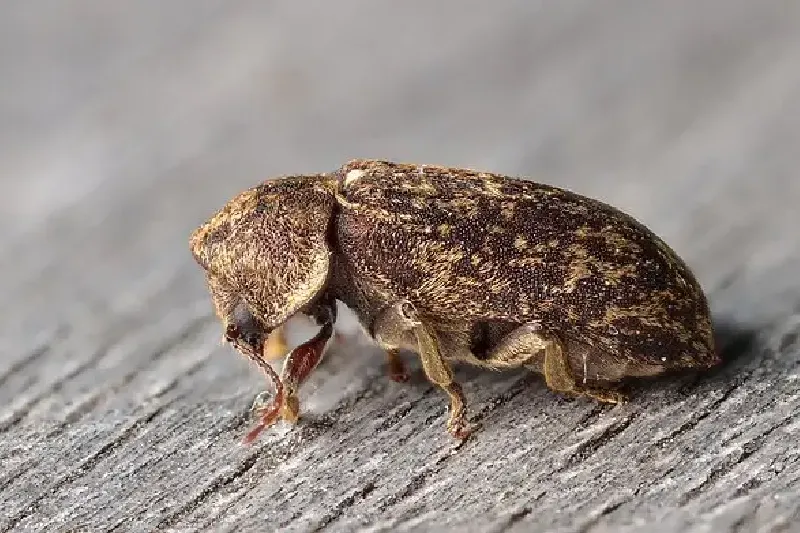Wood Boring Insects
Woodworm is a collective name for many different species of wood boring insects. Learn more about these below:
Woodworm: Wood Boring Insects
Woodworm is a collective name for many different species of wood boring insects. These species can use timber as a food source and as a home. Outside they tunnel into dead trees, felled logs or wet, decaying timber. inside properties they can cause serious structural damage to structural and decorative timbers by quickly multiplying and creating hundreds of tunnels weakening the and even leading to collapse of the host structure! The beetles can attack timber in the more or less dry conditions found in our buildings.
These beetles are referred to as “woodworm” because it is during the larval or ‘worm’ stage that they bore and eat into the wood. Most insects will be identified by the damage they have left behind, it is quite rare to see the insects themselves on the timber. It is however quite normal to find dead beetles esp. common furniture beetle on windowsills as they are attracted to light and simply die once they have mated and the female lays her eggs on more areas of timber.
A common misconception is that the beetle bores the holes on its way into the timber, this is incorrect the holes that we see are usually flight holes where the mature beetle has left the timber. There are many insects that bore into timber, we have listed here the categories that cause the more serious damage to UK property, some of these affect timbers in many countries
The common furniture beetle – anobium punctatum
Common furniture beetle Damage is identifiable from holes in the surface of timber. These holes are in fact emergence holes meaning that the adult beetle has emerged from and left the timber.
The beetle lays its eggs on the timber, the eggs hatch as grubs then bore inwards leaving tunnels within the timber. Active woodworm usually leave behind a scattering of tiny dust piles on and below the timber. This is called frass. This beetle tends to be more prevalent in the moist timbers of older houses for example, where the floor joists are near the ground and ventilation may have been inadequate. Remember the beetle has exited the timber via the holes so treating the holes it is a bit like bolting the stable door after the horse has ran. Also, to be considered is the fact that if you self-treat you will not have a written guarantee, which is usually a requirement for a house sale. Treatment requires the use of regulated chemicals, and you should observe applicable health and safety regulations.
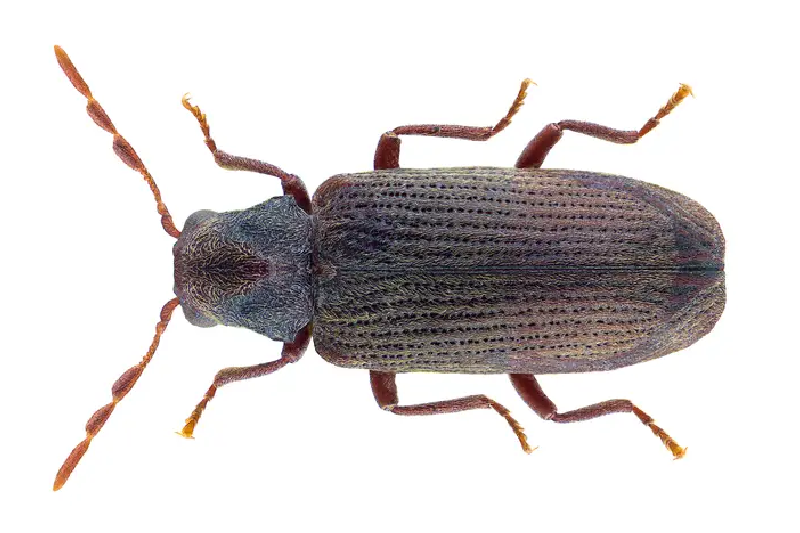
Woodboring weevil Pentarthrum huttoni and Euophryum confine
This weevil is probably the most common beetle in ground floor timbers of Northern Property. Weevils have distinct pointy snouts, with antennae or feelers. There are two main species of Weevil found in buildings pentarthrum huttoni and euopheryum confine. They are small, dark brown or black beetles, about 3mm in length, and are easily distinguished by their pronounced snouts.
The two wood-boring Weevils are almost always found in timber which is damp or rotten – usually with Wet Rot. It is not unusual to find hundreds of adult Weevils crawling about on the surface of rotten wood.
Weevils tend to consume the soft portions of the timber (sapwood) before the harder portions, giving attacked wood a peculiar appearance. In contrast to other wood-boring beetles, both the adult Weevils and the grub bore. Exit holes are very small, often oval with ragged edges. The life cycle is less than one year.
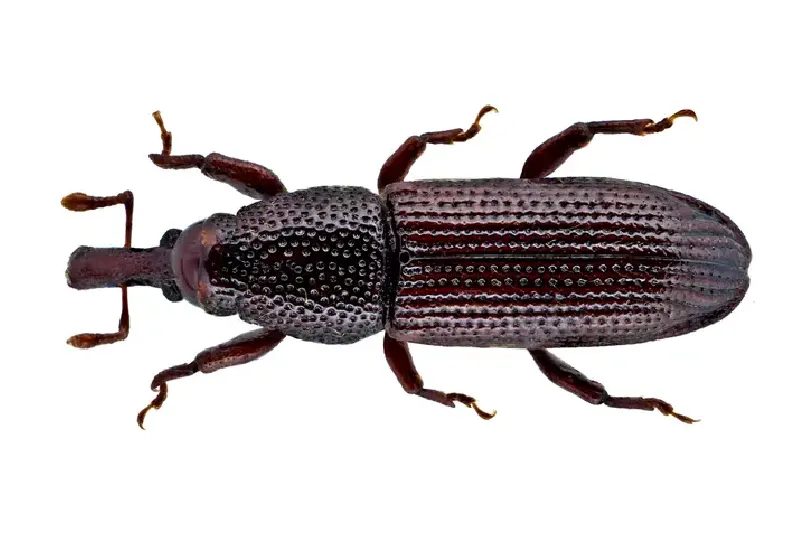
House Longhorn Beetle hylotrupes bajulus
The house longhorn beetle larva attacks the sapwood of dried softwoods. This pest is found both in South Africa, North and South America and many continental European countries, in England it is mainly confined to certain districts in Surrey and Berkshire where it has caused serious damage to structural timbers.
White spindle-shaped eggs 2mm long are laid in cracks and crevices in the wood. Each female beetle may lay up to 200 eggs and larvae may hatch in about two weeks. After crawling on the wood surface, they start boring into the timber. The larva is fleshly bodied white grub and when fully grown may be 32mm long. The duration of the larval stage may vary from 3-11 years. The damage caused in softwood sapwood during this lengthy larval stage may be considerable.
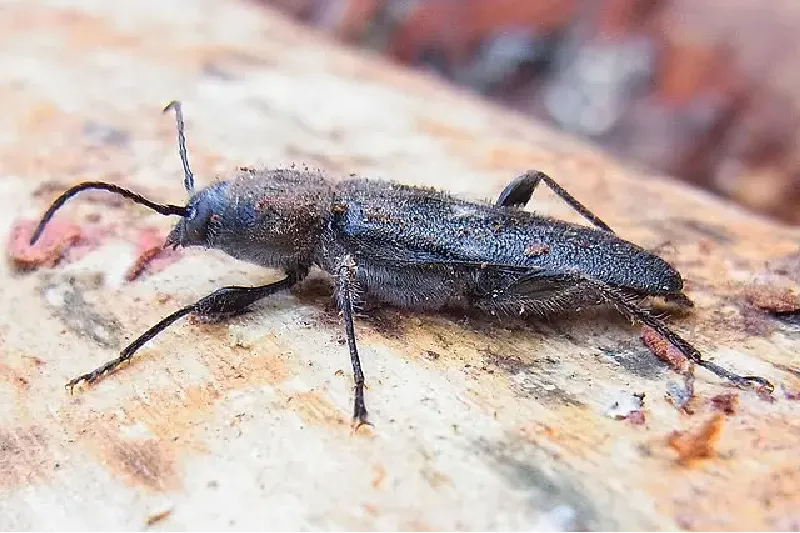
Ptilinus beetle – Ptilinus pectinicornis
The Ptilinus beetle is a fairly distinctive insect in that it has a visible antennae. This beetle can live in a limited range of European hardwoods such as beech, elm, and maple. Damage is usually caused during storage of timbers and can often be found in manufactured furniture. The adult is 4-6mm long and produces a cream-coloured bore dust that is similar to talcum powder and tend to manifest on timber around May to July.

Powderpost beetle – Lyctus brunneus
Softwoods such as pine and spruce are not at risk from these beetles which are found worldwide. The insect gets its name from the damage it causes. In other words it turns parts of susceptible timbers to a fine, powdery dust within a few years. The species found in Britain is Lyctus brunneus. It belongs to the family Lyctidae and was imported many years ago from North America. Lyctus damage is found in wide-pored hardwoods such as ash, elm and oak.
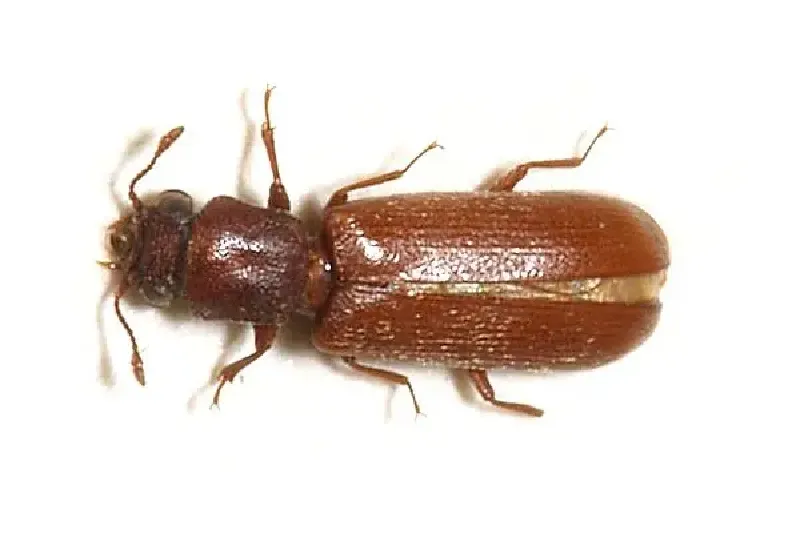
The Deathwatch beetle – Xestobium rufovillosum
Deathwatch Beetle is common throughout the South of England. Northern parts of the country are not usually affected except where timbers have been imported. Attacking large section hardwood timbers such as Elm and Oak, the beetle can move across to neighbouring softwoods. This beetle prefers damp and rotten timbers. In these conditions the beetle can develop rapidly. Treatment can be carried out in the form of a gel or spray on application.
